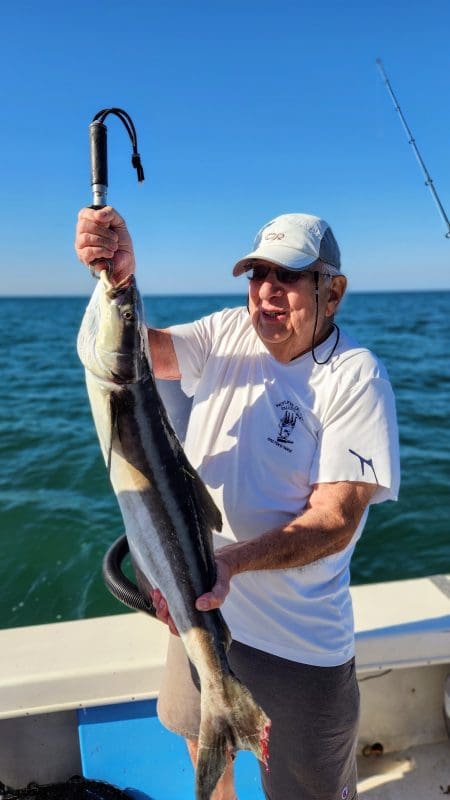Anna Maria island Fishing Report November 5, 2025
Bridging anglers and science: Tagging program strengthens Gulf conservation
With fall temperatures in the air, Anna Maria Island anglers are eager to get out on the water and enjoy the mild temperatures.
Fishing the Gulf beaches is going strong for another week as migratory species are on the prowl corralling bait schools over areas like reefs and hard bottom.
Spanish mackerel are predominate in most areas with a variety of other species like kingfish, jack crevalle, ladyfish and blue runners. Other migratory species like cobia and sharks are in on the action so don’t go out there under gunned. The light, sporty gear you use for Spanish mackerel is no match if a kingfish or cobia comes by, so bring a heavy set up just in case.Moving inshore, water temps are causing snook to be scattered as they are migrating from the beaches to the flats. As they are in transit finding concentrations of fish may be slightly difficult so a little persistence might be required.Redfish are being found along mangroves and oyster bars and even along the beaches. Both live and chunk baits are working well.
Finally, spotted seatrout seems to be following a pattern like the snook as they seem to be scattered throughout the flats. Drift fishing is a good bet if you’re on the hunt for larger trout.On my Just Reel charters, I had the pleasure of having the Romero family from Long Island on the boat. Frank, 81 joined by his wife Amelia, daughter Stacey and granddaughter Alex, 10, got to experience some great fishing while targeting migratory species in the Gulf of Mexico. Spanish mackerel were the most prevalent with a mix of blue runners and ladyfish to add some variety.
The bite was good as Alex and her grandfather Frank were catching fish on just about every bait.
I decided to switch things up a little by giving Frank a larger rod baited with a big threadfin herring to see what else we could muster up and to my surprise within a couple of minutes Frank’s rod was bent over double as the drag began screaming from the reel.
After several minutes into the battle Frank got the fish to the surface. We all gasped as a large cobia came into sight before diving back down into the depths for another drag-screaming run. This proceeded to take place several times before the fish finally gave in and was able to be netted boatside. After landing and measuring the fish, 33 inches to the fork, we noticed it had been tagged, so quickly before releasing it I took several close-up photos of the tag to further investigate later after we were back at the dock.
We migrated from the Gulf to the bay to do some snook fishing which turned out to be good, as again, Frank and Alex hooked into numerous snook and some redfish, too. What an end to a perfect day on the water.
Good fishing, good company and a tagged cobia to add to the story. We completed our day of fishing, and I began the rest of my day which was tracking down that tag on the cobia.
I had a good picture of the tag but wasn’t sure where to start so I called Capt. Scott Moore as I was sure he’d probably know what direction to send me, and he did.
In fact, he knew exactly who had tagged the fish, and after a couple of texts and phone calls I was speaking to the tagger — Savannah Spedding. Savannah works as the Bridge Street Pier bait shop when she’s not studying marine biology as USF in hopes of working with FWC once she gets her degree. She is an avid angler and hunter in Manatee County as well as throughout Florida and recently has been tagging fish in the Gulf for a study being done by the Center for Fisheries Research and Development in cooperation with the University of Southern Mississippi.
This study is specific to studying the migratory habits of cobia and tripletail. By employing the participation of thousands of volunteer recreational anglers throughout the southern US, this information serves to inform fishery resource assessments, management and conservation with hopes of a better understanding of movements, biology and ecology of these species.
In short, anglers such as Savannah who are part of the program, go out and tag and release these species and if another angler catches one of the tagged fish, they have the option to report it to aid in the research of tracking the fish and their habits. Anglers who do report such catches can be rewarded with merch or a thank you for taking the time to make a report knowing that they contributed to the welfare of the environment.
And if you happen to catch a cobia or tripletail here locally, don’t hesitate to reach out to Savannah at the Bridge Street Pier as she would love to hear from you.

